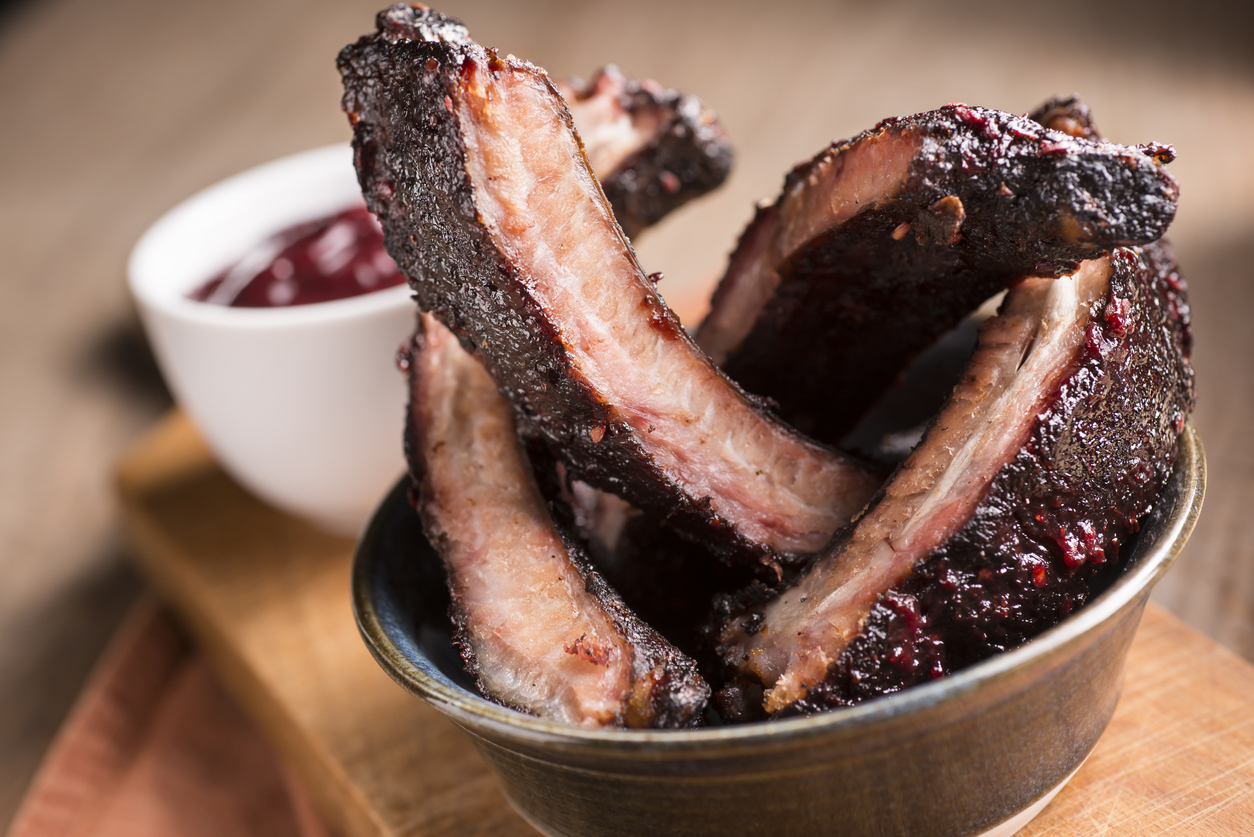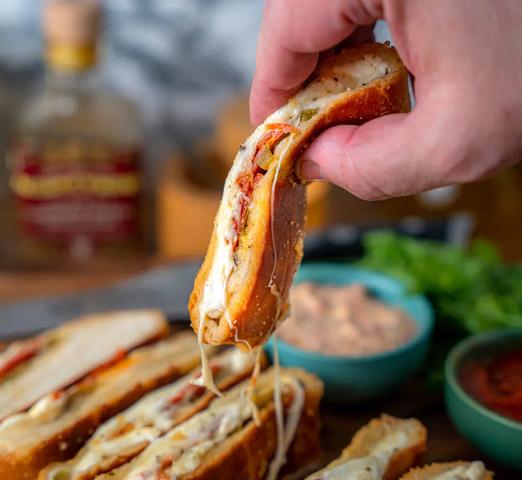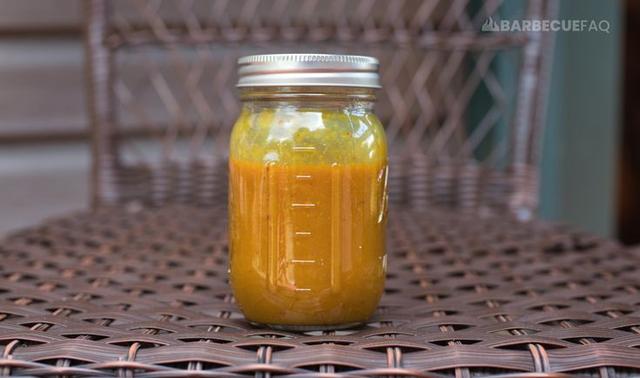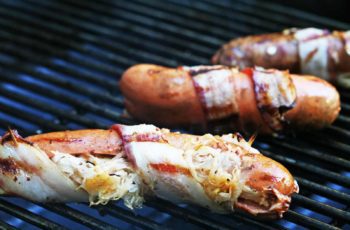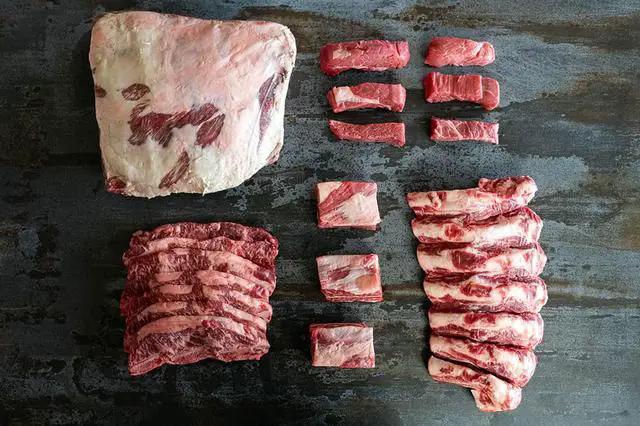
“Prime Rib vs. Short Rib: Unveiling the Battle of the Ribs! Discover the key differences between these two delectable cuts of beef and embark on a flavorful journey. From tenderness and marbling to cooking methods and flavor profiles, explore which rib reigns supreme on your plate. Let’s settle the age-old debate and savor every savory bite!”
Types of Beef Ribs: Differences Explained

Beef ribs can be divided into two main types: short ribs and back ribs. Short ribs come from both the short plate and the beef chuck of the steer. The short plate is an extension of the brisket and provides sub-primal cuts like skirt steak and plate short ribs. Plate short ribs are cut from ribs 6, 7, and 8 and are known for their flavorful marbled meat. They can be smoked low and slow for barbecue. Chuck short ribs, on the other hand, come from ribs 1 to 5 and are located above the brisket. These bones are shorter and do not work well for steaks. Chuck short ribs have characteristics of both rib steaks (like ribeye) and chuck roast, making them great for braising.
Back ribs, also known as beef back ribs, are sourced from the dorsal area of the steer. They come from the rib primal after the ribeye muscle or rib roast has been removed. Unlike short ribs, which have meat on top of the bones, back ribs have meat between the bones (intercostal). While they may not offer as much meat as other beef cuts, they are quick to smoke and can be a budget-friendly option.
Types of Beef Ribs
When it comes to beef ribs, there are two main types: short ribs and back ribs. Short ribs can come from two different places on the steer – the short plate and the beef chuck. The short plate is an extension of the brisket and is often used as a substitute for brisket. From the short plate, we get sub-primal cuts like skirt steak as well as plate short ribs. Plate short ribs come from ribs 6, 7, and 8 and are cut just below the rib-eye as 3 bone slabs. On the other hand, chuck short ribs run from rib 1 to 5 and are cut just above the brisket. These bones are left in the chuck because they are too short for steaks.
Beef back ribs, on the other hand, come from the dorsal area of the steer after the ribeye muscle or rib roast has been removed. These ribs have meat found between the bones (intercostal) instead of on top of them. While beef back ribs don’t offer much meat, they make for a quick and easy smoke for beginners.
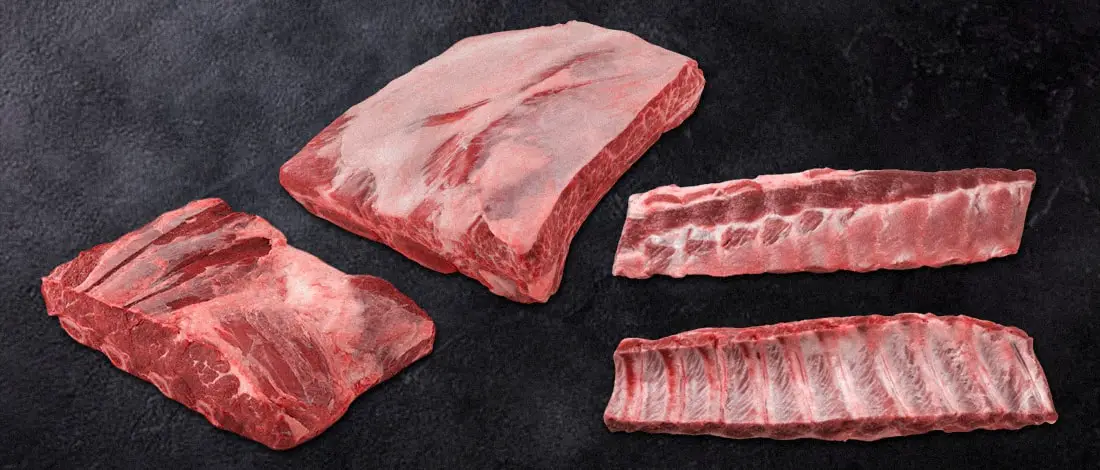
What are Short Ribs?
Short ribs are a type of beef rib that can be sourced from two different areas on the steer – the short plate and the beef chuck. Depending on where you’re from and the butcher’s standards, the forequarter of the steer is separated between the 4th and 5th rib or the 5th and 6th rib. This results in a rib plate that can be divided into the rib primal and short plate. The short plate is an extension of the brisket, making it a great substitute for brisket.
The ribs that come from the short plate are called either plate short ribs or simply short ribs. They are also sometimes referred to as “loaded” beef ribs. Plate short ribs come from ribs 6, 7, and 8 and are cut just below the rib-eye as 3 bone slabs. The reason why ribs 9 – 12 aren’t used is because there is very little lean meat and mostly fat in those sections, which is typically turned into ground beef. When plate short ribs are trimmed, they are cut into shorter lengths of around 4-5 inches.
When left untrimmed and in-tact, plate short ribs are known as “Brontosaurus ribs.” This means that you get the entire section of the short plate with both the lifter muscle on top as well as the heavily marbled serratus ventralis muscle below. Plate short ribs are great for smoking low and slow for barbecue.
Chuck short ribs, on the other hand, run from rib 1 to 5 and are cut just above the brisket. These bones are left in this section because they are too short to work well for steaks. Chuck short ribs are typically sold as 4 bone slabs but can also be found sliced up into singular bones (English cut) or flanken-style (sliced across the bone). Chuck short ribs offer a combination of great marbling associated with rib steaks and the forward beefy flavors of chuck roast. They are often braised rather than smoked.
Beef back ribs, sourced from the dorsal area of the steer, come from the rib primal after the ribeye muscle or rib roast has been removed. Unlike short ribs, the meat is found between the bones (intercostal) rather than on top. While beef back ribs don’t offer much meat, they are quick and easy to smoke, making them popular for beginners.
Plate Short Ribs
Plate short ribs are a type of beef rib that come from the short plate section of the steer. They are cut from ribs 6, 7, and 8, just below the rib-eye. These ribs are typically sold as 3 bone slabs and can be smoked low and slow for barbecue. Plate short ribs have a heavily marbled meat called serratus ventralis, which sits below the fat seam and gives them their delicious flavor. When trimmed, these ribs are cut into shorter lengths of about 4-5 inches and often have the “lifter” muscle removed.
If left untrimmed and in-tact, plate short ribs are referred to as “Brontosaurus ribs.” This means you get the entire short plate section with both the lifter muscle on top as well as the serratus ventralis. Plate short ribs are a great substitute for brisket and can be used in various recipes.
Chuck Short Ribs or “Dino” Beef Ribs
Chuck short ribs, also known as “Dino” beef ribs, are sourced from the chuck and rib primals of the steer. These ribs are cut just above the brisket and are typically sold as 4 bone slabs. However, they can also be sliced into singular bones, known as an “English Cut.” Chuck short ribs offer a combination of characteristics from both the chuck and rib areas. They have great marbling similar to rib steaks like ribeye, as well as the forward beefy flavors associated with chuck roast. Chuck short ribs are often braised rather than smoked, but they can also be smoked if desired.
Beef back ribs come from the dorsal area of the steer and are sourced from the rib primal after the ribeye muscle or rib roast (prime rib) has been removed. Unlike short ribs, the meat in beef back ribs is found between the bones (intercostal) rather than on top of the bones. While beef back ribs don’t offer much in terms of meat, they make for a quick and easy smoke for beginners. They are usually fairly cheap, even for ribeye meat.
There are two main ways that beef ribs can be cut: English style (between the bones) or Flanken style (across the bone). English cut refers to when the ribs are cut into singular bones. On the other hand, Flanken cut implies that the ribs were cut across the bone. Flanken-cut ribs are popular in Korean barbecue and are called Beef galbi or “Kalbi” in Korean. In certain regions like Los Angeles, they may also be referred to as “LA style” due to their popularity among Korean immigrants. Flanken-style ribs are meant to be cooked hot and fast, while English-cut ribs are often associated with low and slow smoking temperatures.
Beef Back Ribs
Beef back ribs are sourced from the dorsal area of the steer and come from the rib primal after the ribeye muscle or rib roast (prime rib) has been removed. Unlike short ribs, the meat in beef back ribs is found between the bones (intercostal). While they may not offer as much meat as other cuts, they are a quick and easy option for smoking, especially for beginners. Additionally, beef back ribs are usually fairly inexpensive, even when compared to ribeye meat.
There are two main ways that beef ribs are cut – English style (between the bones) or Flanken style (across the bone). Beef back ribs can be cut either way depending on preference. English cut refers to singular bones, while Flanken-cut means the ribs were cut across the bone. Flanken-style beef back ribs are popular in Korean barbecue and are known as “Beef galbi” or “Kalbi” in Korean. On the West Coast of the USA, they may also be referred to as “LA style,” as they were popularized by Korean immigrants in Los Angeles.
Different Cut Styles for Beef Ribs
Beef ribs can be cut in different styles, which can affect their appearance and cooking methods. One common cut style is the English cut, where the ribs are separated into singular bones. This style is often used for chuck short ribs and is marketed as “Braising Beef.” Another cut style is the Flanken cut, where the ribs are sliced across the bone. Flanken-cut ribs are popular in Korean barbecue and are called Beef galbi or “Kalbi” in Korean. They are cooked hot and fast at high temperatures.
When it comes to short plate ribs, they are not often used for Flanken-style cuts. Short plate ribs typically come in 3-bone slabs when English cut, while chuck short ribs (ribs 1-5) may feature 4 one-inch rib bones when cut Flanken-style. Each style of cutting offers a different eating experience and cooking method.
It’s important to note that these different cut styles can vary regionally and based on butcher standards. It’s always best to check with your local butcher or meat supplier to find out what specific cuts they offer.
English Cut
The English cut refers to the way beef ribs are cut between the bones. This style results in singular bone pieces, making it easier to handle and serve. It is commonly used for chuck short ribs, which are sourced between the chuck and rib primals. Chuck short ribs have great marbling and offer a combination of rib steak flavors and beefy characteristics associated with chuck roast. They are often braised rather than smoked.
When sold as an English cut, chuck short ribs are typically marketed as “Braising Beef.” This style of cut allows for versatile cooking methods and can be used in various recipes. It is a popular choice for those who prefer the forward beefy flavors of chuck roast combined with the richness of marbled meat.
Flanken-cut ribs, on the other hand, are not commonly used for short plate ribs. Flanken-style ribs are more often made from beef chuck ribs (ribs 1-5), which feature four one-inch rib bones when cut across the bone. These flanken-cut ribs are popular in Korean barbecue and known as Beef galbi or “Kalbi” in Korean cuisine.
Flanken Cut
The Flanken cut is a method of cutting beef ribs across the bone. This results in ribs that have multiple one-inch rib bones. While short plate ribs are not commonly used for Flanken-style ribs, beef chuck ribs (ribs 1-5) are often used and typically feature four one-inch rib bones. Flanken-cut ribs are popular in Korean barbecue, where they are known as Beef galbi or “Kalbi” in Korean. They are also sometimes referred to as “LA style” ribs on the West Coast of the USA, as they were introduced and popularized by Korean immigrants in Los Angeles.
In conclusion, the choice between prime rib and short rib ultimately depends on personal preference and desired cooking method. Prime rib offers a tender and juicy experience, perfect for special occasions. On the other hand, short rib provides a rich and flavorful option that excels in slow cooking methods. Both cuts have their unique qualities, ensuring a delightful dining experience no matter the choice.
Learn More About Grilling
If you want to learn more about grilling, check out these other helpful resources!

